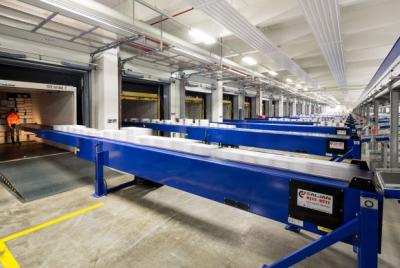Now there are plans for an innovative robot to take over this job. Research is being carried out by BIBA, the Bremen Institute for Production and Logistics at Bremen University, in cooperation with development partners BLG Handelslogistik and SCHULZ Systemtechnik in Bremen plus FRAMOS in Taufkirchen near Munich. The new project is named ‘Interactive Robot System for Unloading Sea Containers’ (IRiS).
The German Federal Ministry for Transport and Digital Infrastructure (BMVI) is supporting this three-year project as part of the Programme for Innovative Port Technologies (IHATEC) with a sum of €2.2 million (about AUD 33m). The total budget is €3.16 million. Technical support comes from test institute TUV Rheinland, and the joint project coordinator is BLG Handelslogistik.
A significant portion of imported and exported containers are loaded and unloaded in seaports. In today’s highly automated transport chain, unloading is one of the last manual processes. The reason is a lack of lean, easy, reliable, and cheap technical solutions.
Due to high investment costs and commissioning times as well as the complex adaptations needed, only a few port operators use the automated and semi-automated robot systems currently available. Furthermore, these solutions are often stationary and relatively large, which considerably limits their flexibility. That means this monotonous, physically very demanding work in usually exposed surroundings is still overwhelmingly done by manpower. Unloading a 40-foot standard container involves moving up to 1,800 cartons, each weighing 35 kilograms or even more.
Mobile system will be easily and quickly integrated into existing infrastructure
The project aims to improve working conditions and efficiency in goods handling processes in seaports. The mobile robot under development here is intended for use in existing port infrastructure without significant alterations. It will move under its own power between several gates and be able to drive into containers as they empty. It will also feature an innovative kinematic and gripping system. Established machine learning methods will enable the robot to classify and optimally handle various packing scenarios.
Human-robot interaction interface ensures that collaboration works
The first step needed is assessing the technological and employee-specific requirements. To make collaboration with the machine as simple as possible, BIBA is developing human-machine interfaces. They will be integrated in a test control station. Once all the individual components are incorporated in an overall system, laboratory and field tests will examine the results.
Various interaction modules will enable intuitive control of one or more robots. BIBA is responsible in the project not only for the kinematics and gripper system, but also for designing the workstation to integrate the operating personnel. It is developing interaction modules based on intuitive, user-specific concepts as well as devising the monitoring system for checking correct robot functioning and performance.
Scenario analysis using artificial intelligence and advanced image processing techniques
Project partner FRAMOS specialises in industrial image processing. The company is developing state-of-the-art methods for reliable classification of packing scenarios and analysis of container contents. The object recognition is based on 2D and 3D image data. It uses the latest image processing methods combined with machine learning. That will enable the system, among other things, to recognise whether a container can be discharged fully automatically by the robot, or whether special conditions mean the robot has to be manually controlled from the control station. It will also analyse the positions and orientation of the contents and plan the optimal unloading process.
As early as in 2019, the prototype will demonstrate what reliable human-machine collaboration in the supply chain can look like.
Source: T&L News || January 30, 2018 |||




